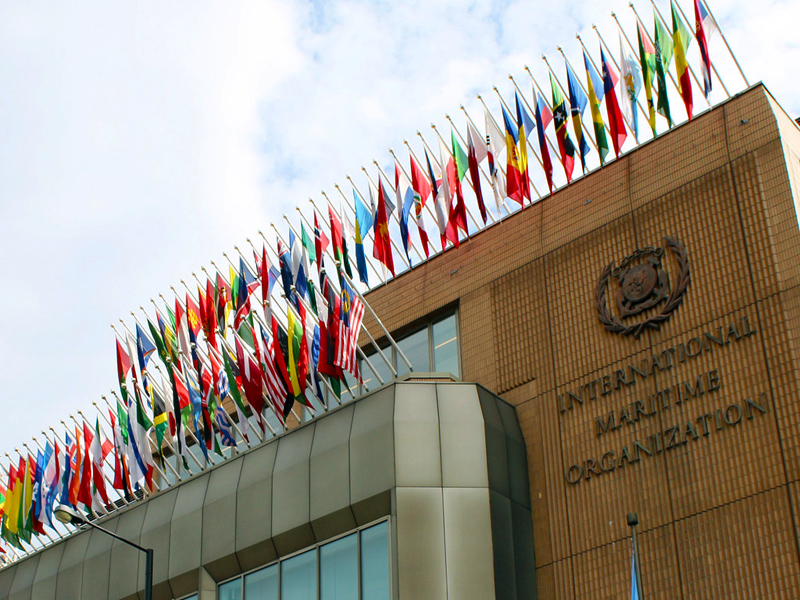As IMO’s environmental assembly prepares to convene for the penultimate time before the CII and EEXI are introduced, Gavin Lipsith explores the prospect of certainty on shipping’s climate measures.
If the Marine Environment Protection Committee (MEPC) is the main event of shipping’s environmental regulatory calendar, the intersessional working group meetings that precede it have become the pre-fight press conference; packed with trash talk, confrontation and posturing – but saving the knock-out punch for the big night.
Reports from last week’s intersessional working group, the last before the next MEPC meeting in June, indicate that some solid ground has been laid for big decisions on shipping’s future environmental regulatory regime. Big topics on the agenda included the final tweaks to the Carbon Intensity Indicator, due to enter force next year, and the selection of market-based measures intended to close the cost gap between fossil and green fuels.
One perspective is not enough to cover such a multifaceted meeting. Three angles give a brief taste the conversations.
The shipowner: Simon Bergulf, A.P Möller-Maersk

“This week’s discussion on suggested market-based measures marks a very substantial shift in gears and a point of no return when it comes to long term measures,” Bergulf commented on the IMO intersessional working group meetings this week.
He cited concrete proposals on market-based measures, a growing recognition of the role of lifecycle analysis of fuels, and strong support for a global fuel standard.
The environmentalist: Aoife O’Leary, Opportunity Green

“There can finally be no doubt we will put a carbon price on shipping,” O’Leary wrote at the conclusion of the working group, suggesting fruitful discussions on a topic that has been opened, closed and reopened at IMO since the early 2000s.
But the price must be high enough to transition to zero-emission fuels quickly, as well as offering a mechanism to support developing countries. Member states need to move to MEPC 78 with “ambition, equity and urgency”.
The academic: Harilaos Psaraftis, Technical University of Denmark

“I am not sure I agree on the convergence,” reported Psaraftis. Discussions on potential MBMs were inconclusive – the intersessional group not being a forum for decisions – and the thorny issue of ‘common but differentiated responsibilities’ between developed and developing states remains an obstacle.
Those views do not exactly converge, but they illustrate an acknowledgement that market-based measures will have to happen eventually.
Entering a new phase
The working group proposed that it could finish the first, exploratory phase of considering mid- to long-term measures to reduce greenhouse gas emissions. It will now enter the second stage, scheduled to last until spring next year, during which it will assess proposals and select which measures to develop further. So far then, the process to consider longer term carbon-cutting measures is technically on track. But the big decisions are unlikely to be taken at the next MEPC.
The proposal to develop an International Maritime R&D Board funded by a US$2 per tonne levy on fuel, for example, still seems stuck. An amended proposal to improve the distribution of funds in favour of developing countries has been pre-rejected by a consortium of small island developing states, which argues that a higher carbon levy is needed to encourage the uptake of zero-emission solutions.
It seems unlikely that a single proposal incorporating all those factors will emerge, let alone gain consensus, let alone gain consensus without bogging down MEPC and intersessional groups in years of debate at the cost of other important discussions.
One attempt is Japan’s proposal for a Zero Emissions Vessel Incentive Scheme, whereby zero-emission vessels will be incentivised through a ‘feebate’ fund; a fee on carbon fuels will be rebated to greener vessels. According to delegates at the working group the idea was greeted with a mixed reception at the intersessional talks.
Two further information documents submitted by Japan show developments to advance carbon-free propulsion. One is a landside testbed for new fuels and power converters. The other is an innovative vessel testbed, due to be built this year and operational by 2025, that can test up three power sources (engines running on carbon-free fuels, fuel cells and batteries) at once. It is a rare, practical example of the steps one country is taking to make sure its shipping sector is contributing to global climate action.
A critical element of assessing fuels and their contribution to emission reduction targets is lifecycle analysis. Some concrete proposals are on the table for MEPC. Among them are a recommendation for a way to measure methane slip, a case study of the assessment for a biofuel project in Canada, and a suggestions from Solomon Islands and the Pacific Environment and Inuit Circumpolar Council on how to measure CO2 equivalent emissions at both 100- and 20-year timeframes.
Finalising short-term measures
The MEPC meeting in June will also consider final changes to the CII before it is implemented next year. Submissions for the meeting include the addition of a ‘port time correction factor’ so that cruise ships spending a long time in port are not unfairly penalised in their CII rating. This will be debated; a counter proposal argues that the suggested factor goes too far and gives cruise ships an unfair advantage.
But the core issue around CII has yet to be addressed; whether to calculate CII using the Annual Emissions Reduction or Energy Efficiency Operating Index. This makes a material difference to the methods ship operators will need to take to comply, but for the time being it looks as though the calculation will need to be made using both factors. A decision could be made in 2026 when the measure is due to be reviewed, and though reduction rate targets have been set for 2023-2025, the steps from 2026-2030 still need to be decided.
Some national action plans will also be reviewed in June. Resolution MEPC.327(75) adopted in 2020 encourages member states to develop and submit voluntary plans to address GHG emissions from ships, outlining policies and actions. IMO and Norway have coordinated on the project GreenVoyage 2050. Based on that experience they are offering their guidance to other member states through a proposed series of meetings.
Finland offers one of a few well-defined national action plans, driven by its government’s ambitious aim of carbon neutrality. The plan includes multiple incentives and funding for developing green shipping technologies and reorganizing logistics chains to reduce emissions, but wholeheartedly concedes jurisdiction over shipping emission regulations to the IMO.
External supervision
Other governments may not be so charitable. The European Union has already confirmed shipping’s inclusion in its emissions trading scheme, and that up to 75% of funds raised will be ploughed back into research into green shipping technologies. If MEPC is slow in making decisions, other governments could follow the EU’s lead.
A strongly worded report submitted to MEPC 78 by the Clean Shipping Coalition suggests that national governments would be within their rights to impose more restrictions on shipping in their quest to fulfil Paris Agreement obligations – even beyond sovereign waters.
In the report, ‘Freedom to Regulate the High Seas’, Aoife O’Leary of Opportunity Green explores the legal basis for states to act on shipping emissions. She argues: “Provided a few important legal and enforcement considerations are respected and built into the design of any policy measure, there are no legal obstacles to national or regional action [on GHGs from the maritime sector].”
The report is a warning shot across the bow of MEPC and its member states. If shipping doesn’t start acting fast in the drive to stop climate change, someone else will take the responsibility. MEPC 78 in June is the first chance shipping will have to show governments that it is serious in its ambitions to eliminate greenhouse gas emissions.
































